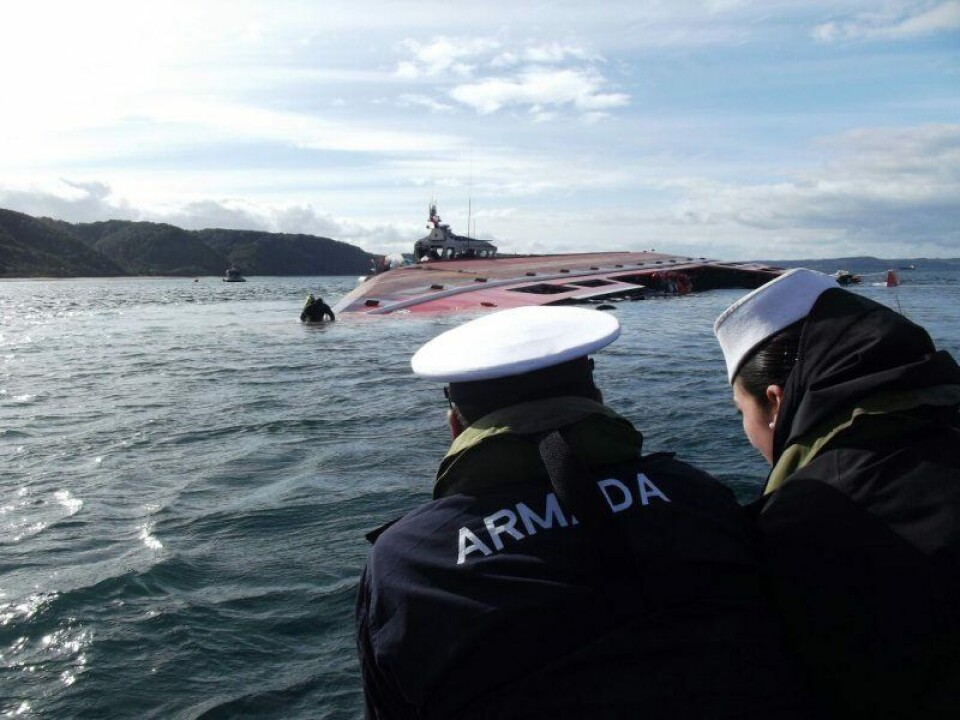
Seven firms bid for wellboat salvage contract
Work to re-float the wellboat, Seikongen, that sank in Chile in October is likely to begin this month, according to the vessel's owner, CPT Empresas Marítimas.
CPT filed a request with the authorities to present a new plan that involves an international tender for the removal of the ship.

The aim is to speed up the salvaging of the vessel, which was working for Chilean fish farmer Camanchaca when it sank off the coast of Chonchi in Chiloé on October 18 last year.
Request approved
"The measure seeks to shorten the execution times of the salvage manoeuvres and maintain the security and control conditions deployed to date, which have avoided environmental pollution in the area," CPT stated.
According to CPT, the request was approved by the authorities, so in the middle of this month it will deliver the new plan to re-float the ship. One of the ship's fish transfer holds still contains what's left of its cargo. CPT said the hold was "the one that it is completely sealed and without structural damage, allowing the execution of the rescue without altering its content".
Professional team
Currently a maintenance and control plan is being carried out in the area surrounding the ship, CPT said. This includes daily monitoring by specialised divers who verify the state of the seals and the structure. There is also constant supervision by the authorities.
"As an additional prevention measure, the ship is surrounded by containment barriers," CPT added.
"The development of this plan is in the charge of a multi-disciplinary professional team, which will evaluate the alternatives presented by seven leading maritime rescue companies."
The new, Hong Kong-built Seikongen was damaged during loading operations near Pilpilehue, not far from the city of Puerto Montt, more than 1,000 kilometres south of the Chilean capital, Santiago. It was carrying 200 tonnes of salmon.






















































